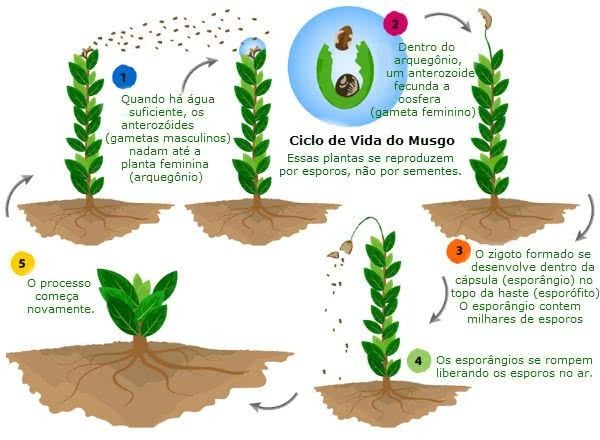THE cellular respiration it is a process in which organic molecules are oxidized and ATP (adenosine triphosphate) is produced, which is used by living beings to supply their energy needs. Breathing takes place in three basic steps: glycolysis, Krebs cycle and oxidative phosphorylation.
Glycolysis
THEglycolysis it is an anaerobic step of cellular respiration that takes place in the cytosol and involves ten different chemical reactions. These reactions are responsible for breaking down a molecule of glucose (Ç6H12O6) in two molecules of pyruvic acid (C3H4O3).
The glycolysis process starts with the addition of two phosphates, from two ATP molecules, to the glucose molecule, promoting its activation. This molecule becomes unstable and easily breaks down into pyruvic acid. With the breakdown, four ATP molecules are produced, however, as two were used initially for glucose activation, the positive balance is two ATP molecules.
During glycolysis, four electrons are also released (and-) and four H ions
+. two H+ and the four and- are captured by two NAD molecules+ (nicotinamide-adenine dinucleotide), producing NADH molecules.Therefore, we have the following equation that summarizes glycolysis:
Ç6H12O6+ 2ADP + 2Pi + 2NAD+ → 2C3H4O3 + 2ATP + 2NADH + 2H+
Mind Map: Cell Breathing

*To download the mind map in PDF, Click here!
Krebs Cycle
After glycolysis, an aerobic step begins, which includes the Krebs cycle, also called citric acid cycle or tricarboxylic acid cycle. This step takes place inside the cell organelle known as mitochondria and starts with the transport of pyruvic acid to the mitochondrial matrix.
In the matrix, pyruvic acid reacts with coenzyme A (CoA) there, producing a molecule of acetylcoenzyme A (acetyl-CoA) and a molecule of carbon dioxide. During this process, a NAD+ molecule is transformed into one of NADH due to the capture of 2 and- and 1 of 2 H+ that were released in the reaction.
The acetyl-CoA molecule undergoes the oxidation process and gives rise to two carbon dioxide molecules and an intact coenzyme A molecule. This process, which involves several chemical reactions, is called Krebs cycle. See the diagram below:

This cycle begins when an acetyl-CoA molecule and oxaacetic acid react to produce a citric acid molecule, releasing a CoA molecule. Eight reactions occur sequentially in which two carbon dioxide molecules, electrons and H, are released+. At the end of this process, the oxaacetic acid is recovered and the cycle can be started again. Electrons and H ions+ are captured by NAD+ and transformed into NADH. They are also captured by FAD (flavin adenine dinucleotide), which is transformed into FADH2. The Krebs cycle results in 3 NADH and 1 FADH2.
Do not stop now... There's more after the advertising ;)
During the cycle, a GTP (guanosine triphosphate) molecule is also produced from GDP (guanine diphosphate) and Pi. That GTP molecule is similar to ATP and is also responsible for providing energy to carry out some processes within the cell.
Oxidative Phosphorylation
The last stage of cell respiration also takes place inside the mitochondria, more precisely in the mitochondrial crests. This step is called oxidative phosphorylation, as it refers to the production of ATP from the addition of phosphate to ADP (phosphorylation). Most of the production of ATP occurs at this stage, in which the reoxidation of NADH and FADH molecules takes place.2.
In mitochondrial crests are found proteins that are arranged in sequence, the so-called electron transport chains or respiratory chains. In these chains, the conduction of electrons present in NADH and FADH occurs2 even oxygen. The proteins responsible for transferring electrons are called cytochromes.
The electrons, when passing through the respiratory chain, lose energy and, in the end, combine with the oxygen gas, forming water in the final reaction. Despite participating only at the end of the chain, the lack of oxygen causes the process to be interrupted.
The energy released through the respiratory chain causes the H ions+ focus on the space between the mitochondrial ridges, returning to the matrix. To return to the interior of the mitochondria, it is necessary to go through a protein complex called a ATP synthase, where the production of ATP takes place. In this process, about 26 or 28 ATP molecules are formed.

Respiration takes place in three basic steps: glycolysis, the Krebs cycle and oxidative phosphorylation
At the end of cellular respiration, there is a total positive balance of 30 or 32 ATP molecules: 2 ATP from glycolysis, 2 ATP from the Krebs cycle and 26 or 28 from oxidative phosphorylation.
Important:In prokaryotes, the entire process of cellular respiration takes place in the cytoplasm and cell membrane.
By Ma. Vanessa dos Santos
Would you like to reference this text in a school or academic work? Look:
SANTOS, Vanessa Sardinha dos. "Cellular respiration"; Brazil School. Available in: https://brasilescola.uol.com.br/biologia/respiracao-celular.htm. Accessed on June 27, 2021.



